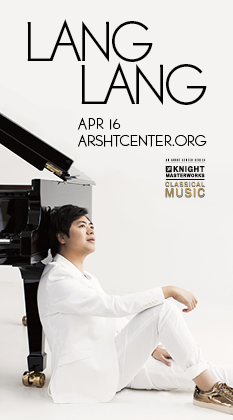From Bach to Kallembach, Seraphic Fire bridges the centuries in Easter program

Patrick Quigley conducted Seraphic Fire in an Easter program Friday night at The Sanctuary Church in Fort Lauderdale.
Death and resurrection were the themes Friday, as the choir Seraphic Fire ushered in Easter weekend.
Led by artistic director Patrick Dupré Quigley at The Sanctuary Church of Fort Lauderdale, the choir gave resonant, sensitive performances of music that spanned nearly 400 years, with a work from the early Baroque, a Bach classic and a world premiere performed with the composer in the audience.
If classical music is rooted in the past, choral music is steeped in it. And so the Easter Oratorio by Chicago composer James Kallembach was given its world premiere performances this week by Seraphic Fire, carrying the weight of Bach, Brahms and the other giants of choral music’s past.
Kallembach’s stirring and dramatic work is substantial, running around 25 minutes. His Easter Oratorio contains stately, old-fashioned harmonic progressions, pedal points and passages of formal choral grandeur. But the dissonances gently woven into the fabric of the music remind you that this is not 1875. And this is a a more skeptical take than the usual sacred music, with Kallembach, choral director of the University of Chicago, using the character of Goethe’s Faust to question the faith expressed by the chorus.
Taking the role of Faust was the bass James K. Bass, singing the questioning, fearful and pessimistic words of Goethe’s scholar in a solemn and gleaming voice. A duet between mezzo-soprano Clara Osowski and soprano Sarah Moyer offered a quick-moving, vivid portrayal of the scriptural contest between life and death, with Brahmsian figures in the bass and a driving rhythmic pulse to the music.
The affirmation of the ending felt too quick and easy, as the questioning music turned rhapsodic, with trumpet, timpani and ascending figures in female voices announcing the resurrection, as Goethe’s skeptical scholar starts to come around. But this was still a more-than-worthy work, a modern take on a traditional form that is likely to repay repeated hearings.
Musikalische Exequien is a German funeral mass composed in 1635 and 1636 by Heinrich Schütz. This early Baroque work, written during the Thirty Years War, can feel remote and foreign, generations distant from the musical world of Bach. Yet under Quigley’s direction, the work was technically dazzling in its virtuoso vocal writing, yet human-scaled and emotionally expressive.
There was complex interplay between tenor and bass, soprano and mezzo, and these came off with clarity, attention to detail in their ornamentation and a subtle lyricism. The choruses that alternated with the solos and duets were rendered with a light airiness and natural phrasing, the opposite of the plodding grandeur of some lesser sacred choral works. In the final movement, a celebration of the peace of death, an off-stage baritone and two sopranos took the role of angels, singing with an ethereal, otherworldly tone that effectively brought this music from a distant era to a close.
Seraphic Fire has had a hard time finding orchestral players to match the quality of its singers. But in Bach’s Easter Oratorio the orchestra was thoroughly professional, with a rich Baroque sound, good intonation in string instruments, vigorous and character-filled trumpet playing and outstanding wind soloists.
Particularly notable were the long, sensitively phrased oboe solo of Rick Basehore and the florid, lively flute playing of Ebonee Thomas. Pairing brilliantly with Thomas’ flute was the assured, agile and expressive singing of soprano Meredith Ruduski.
Although this work has its dark, searching moments, the overall tone is one of joy in Christ’s resurrection. Under Quigley’s direction, the running figures of the opening chorus were buoyant and lively, with a strongly marked rhythmic structure that gave a sturdy frame to this fast-paced music.
The mezzo-soprano Margaret Lias brought a plush but focused tone to her expression of the words of Mary Magdalene. If the tenor Steve Soph seemed underprojected in the lower register, his brilliant clarity and warm color at the top did full justice to Bach’s melody and ornamentations. The final movement, with trumpets and timpani joining in, was a jubilant expression of the final victory over death.
Posted in Performances
One Response to “From Bach to Kallembach, Seraphic Fire bridges the centuries in Easter program”
Leave a Comment
Sat Apr 15, 2017
at 11:07 am
1 Comment






Posted Apr 15, 2017 at 2:28 pm by John Bull
There was nothing baroque about the sound of those instrumentalists — beautiful sounds, but thoroughly modern. It’s good that Seraphic Fire returned to modern players, though: as your review makes clear, that’s what South Florida audiences and reviewers are looking for.